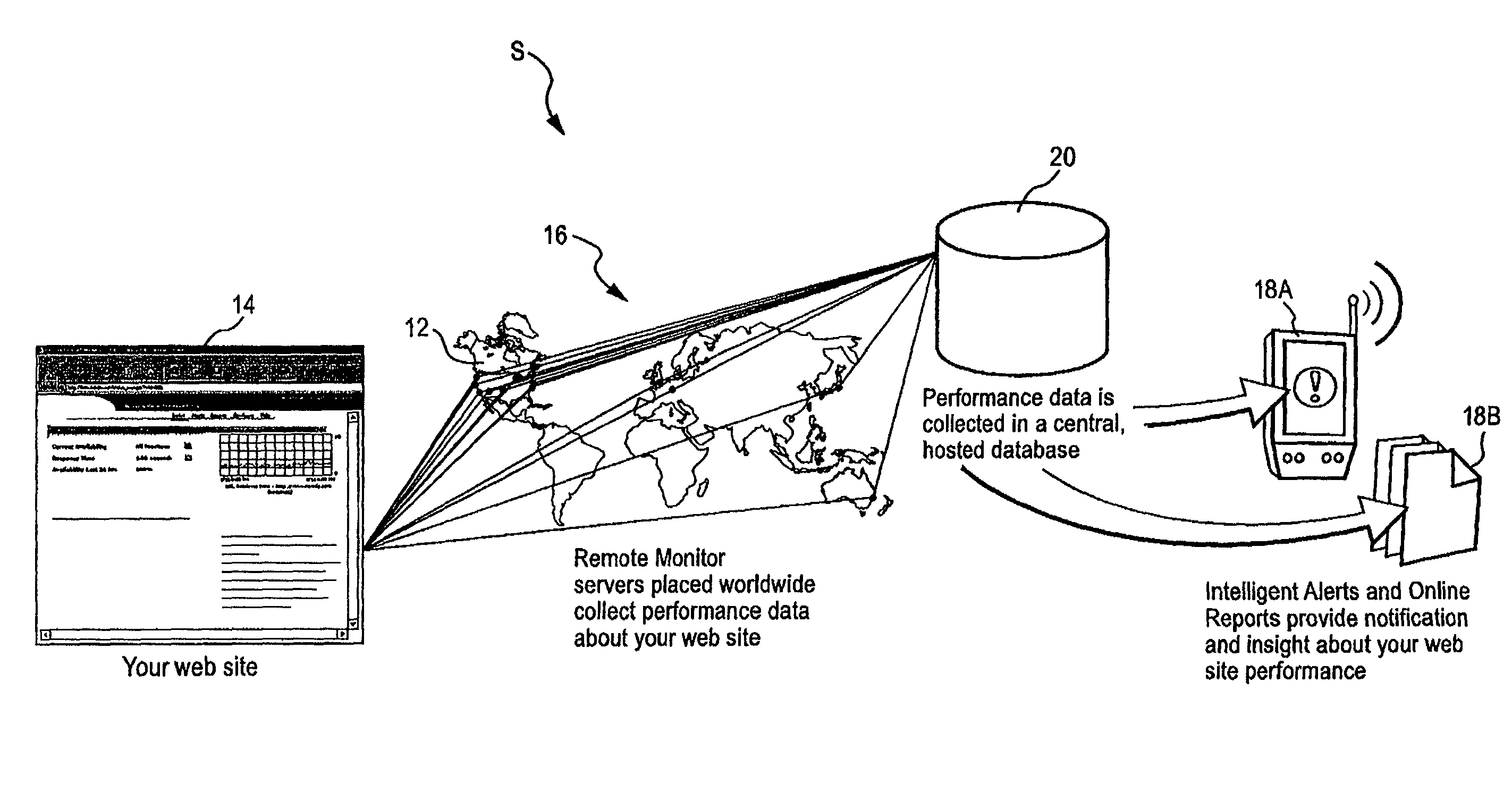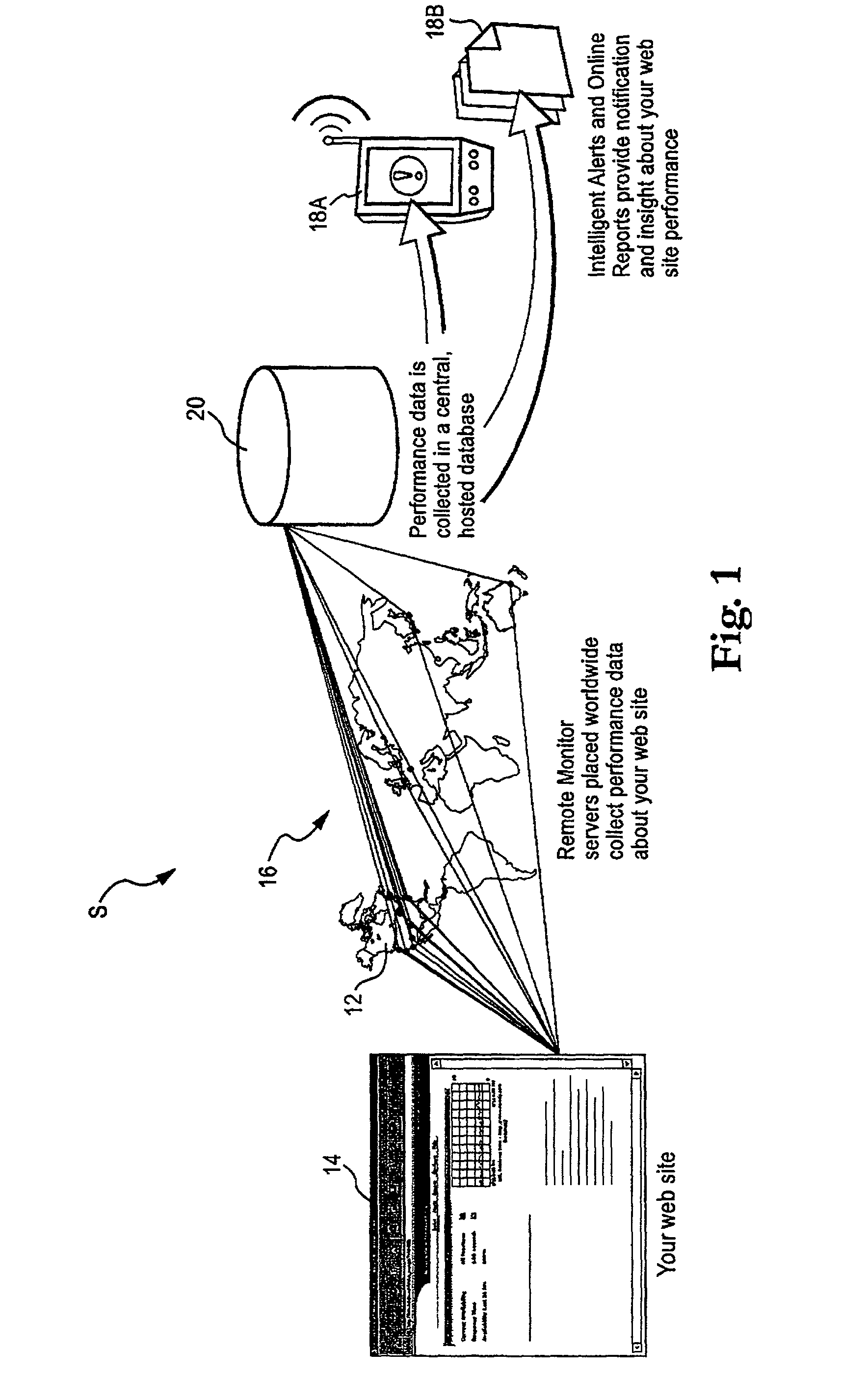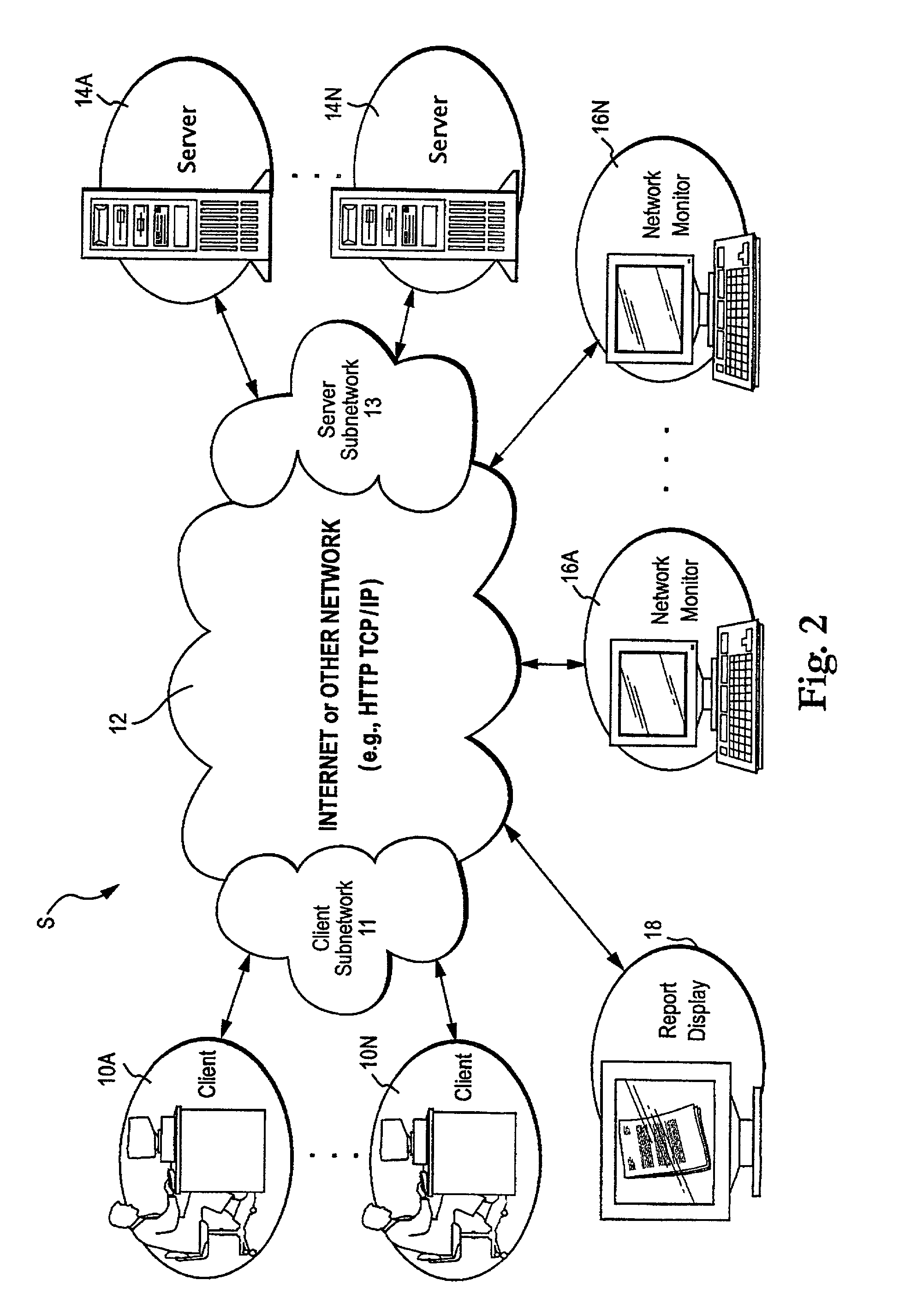Methods of determining communications protocol latency
a communication protocol and latency technology, applied in the field of data communication monitoring and analysis, can solve the problems of inability to the inability of online companies to lose more than $4.3 billion in revenues each year, and the inability to meet the needs of the site, so as to avoid investing time and money, reduce the amount of site resources, and accurately assess the performance of the web si
- Summary
- Abstract
- Description
- Claims
- Application Information
AI Technical Summary
Benefits of technology
Problems solved by technology
Method used
Image
Examples
example remote
Monitoring Flow
FIG. 7 shows an example flowchart used to perform a network monitoring operation in accordance with an example preferred embodiment of this invention. In the FIG. 7 example, a monitoring device 16 including, for example, a network adapter card programmed to operate in the so-called promiscuous mode is used to monitor the TCP and HTTP (or other transaction-based) protocol exchanges between the client 10 and a server 14 (or the same techniques could be used for monitoring peer-to-peer communications).
Calculate TCP Connect Time
In this example, monitoring device 16 first calculates the TCP connect time (block 102) by, for example, calculating the time from when the SYN packet is sent by client 10 to server 14 until the time the server replies with a SYN ACK (acknowledgment) packet. If the monitoring device 16 is co-located with server 14, then this measurement directly indicates how quickly server 14 can initiate an TCP session. When this same measurement is taken with mo...
PUM
 Login to View More
Login to View More Abstract
Description
Claims
Application Information
 Login to View More
Login to View More - R&D
- Intellectual Property
- Life Sciences
- Materials
- Tech Scout
- Unparalleled Data Quality
- Higher Quality Content
- 60% Fewer Hallucinations
Browse by: Latest US Patents, China's latest patents, Technical Efficacy Thesaurus, Application Domain, Technology Topic, Popular Technical Reports.
© 2025 PatSnap. All rights reserved.Legal|Privacy policy|Modern Slavery Act Transparency Statement|Sitemap|About US| Contact US: help@patsnap.com



